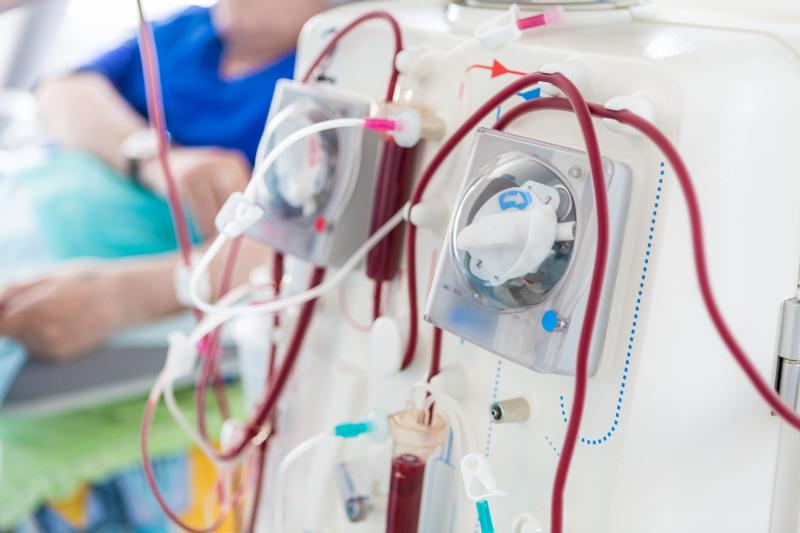 The private sector’s support is needed to provide dialysis treatment for kidney patients.
The private sector’s support is needed to provide dialysis treatment for kidney patients.Undergoing haemodialysis does not appear to increase the likelihood of vitreous haemorrhage in diabetes patients with proliferative diabetic retinopathy, a new study has shown.
Researchers performed a retrospective cohort study on 145 eyes of 102 patients on haemodialysis, and on 36 eyes of 21 patients on peritoneal dialysis. The incidence rates of vitreous haemorrhage 12 months before and after dialysis were compared between groups.
In the year after dialysis initiation, 34 eyes developed vitreous haemorrhage in the haemodialysis group, resulting in an overall incidence rate of 23.4 percent. This was not significantly different from that of the peritoneal dialysis group (n=8; 22.2 percent; p=1.00). The cumulative incidence of vitreous haemorrhage was likewise statistically similar between groups (p=0.941).
Moreover, severe vitreous haemorrhage requiring vitrectomy was reported in six eyes in the haemodialysis group and one in the peritoneal dialysis group. The incidence rates were comparable (17.6 percent vs 12.5 percent; p=1.00). In all the other cases, the vitreous haemorrhage resorbed spontaneously.
Longitudinal comparisons, however, showed that the incidence of vitreous haemorrhage was significantly reduced in the year during vs before haemodialysis (23.4 percent vs 35.2 percent; p=0.008).
Univariate analysis found that undergoing panretinal photocoagulation just before haemodialysis was a significant risk factor for vitreous haemorrhage development (p<0.001). Other variables, such as the duration of diabetes, blood pressure, medication and haemoglobin levels, had no significant effect.